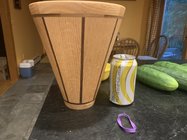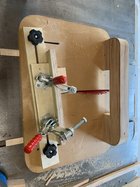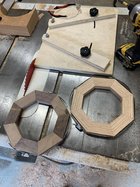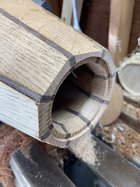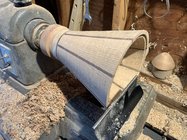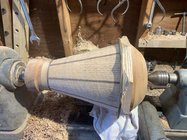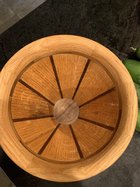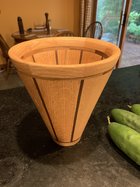A project that I'm keen to try is to turn a canister to hold kitchen utensils, using dried hardwood, cut into staves. I'm good with the process of creating staves and gluing, etc. I've got some questions about turning the canister. I'm figuring the outside dimension to be approximately 8" tall and 6" in diameter the sides will be effectively straight, but may have a slight taper. Turning the outside should be straightforward, but the inside is going to be more of a challenge. To accomplish this, it seems that a scraper or two might be the order of the day. The specific shape will depend on how I decide to work the bottom corner, square or round. Thinking that I'd need a side cutting scraper, in either round or diamond shape.
I see that PSI has both of them, but with what appears to be relatively short handles. Would I be better off with scrapers with longer handles ~16" or so vs. the 12" on the PSI? I know that I'll have to angle my tool rest inside the canister.
Did a search for both the stave turning and the scraper question, but did not find any suitable answers.
I see that PSI has both of them, but with what appears to be relatively short handles. Would I be better off with scrapers with longer handles ~16" or so vs. the 12" on the PSI? I know that I'll have to angle my tool rest inside the canister.
Did a search for both the stave turning and the scraper question, but did not find any suitable answers.

